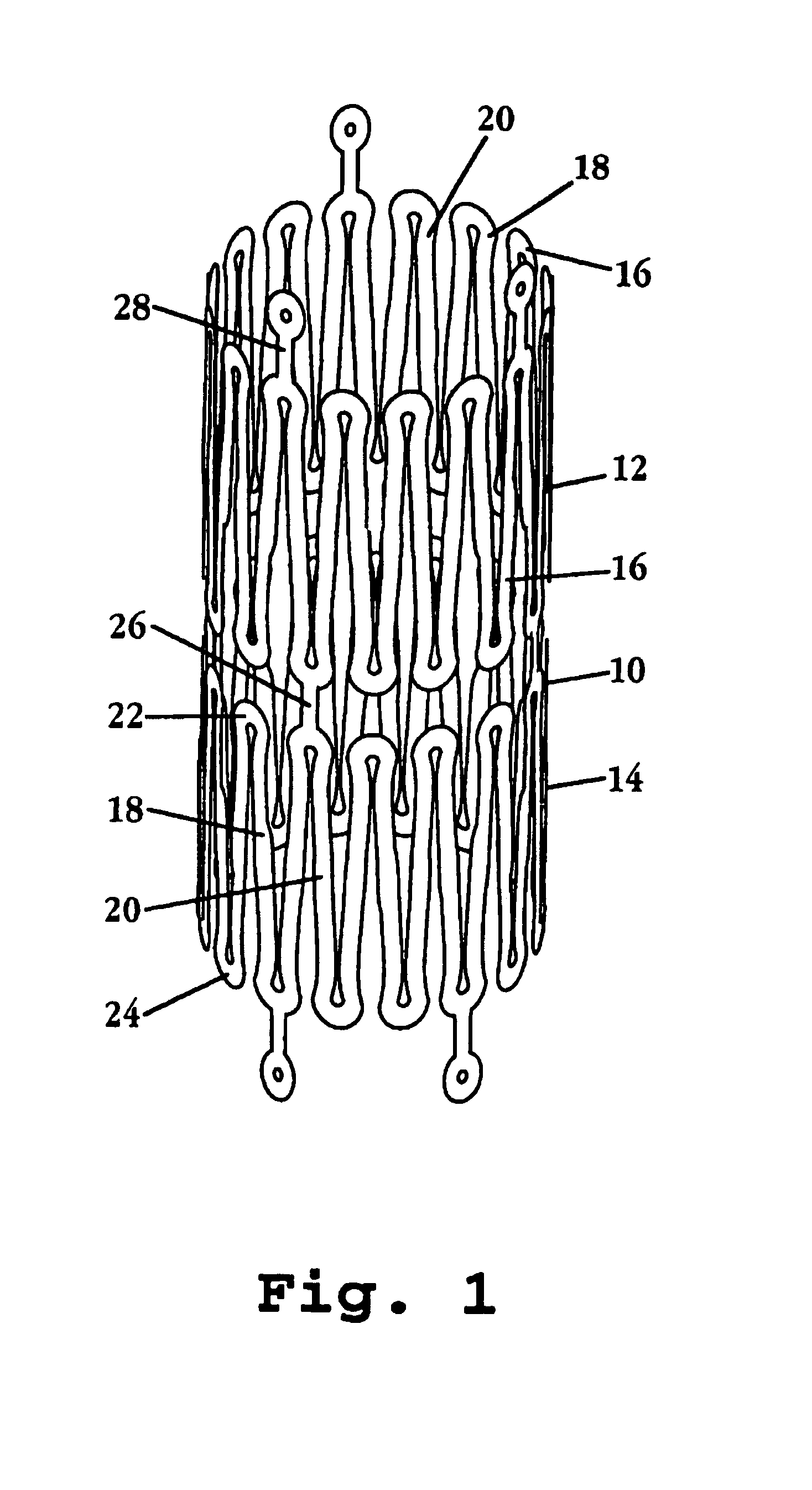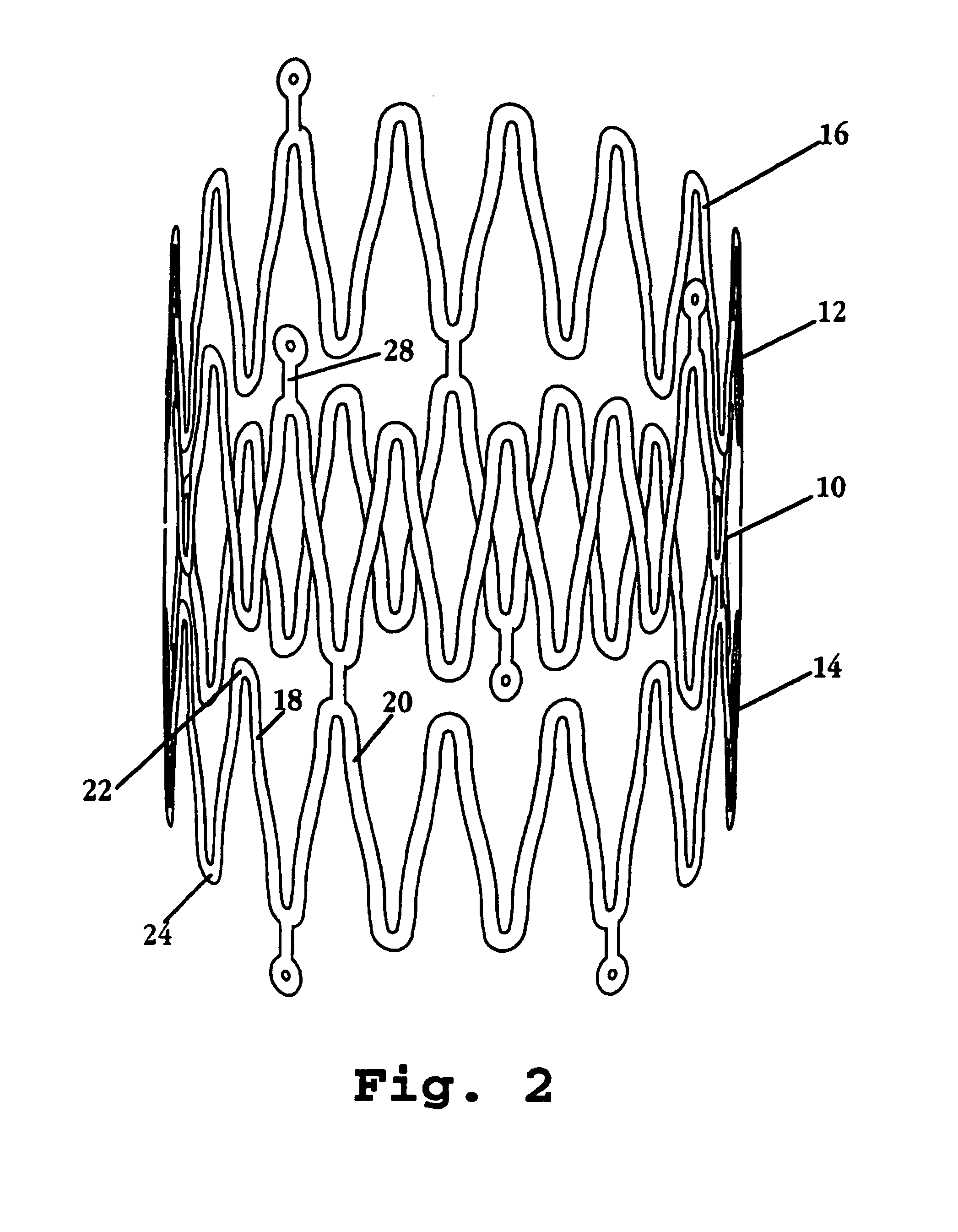Neurovascular stent and method
a stent and neurovascular technology, applied in the field of neurovascular stents and methods, can solve the problems of not meeting the requirements of several requirements outlined above, affecting the treatment of patients, and requiring several formidable challenges
- Summary
- Abstract
- Description
- Claims
- Application Information
AI Technical Summary
Benefits of technology
Problems solved by technology
Method used
Image
Examples
Embodiment Construction
[0022]FIGS. 1 and 2 show a portion of a stent 10 constructed in accordance with the invention, in the stent's contracted and expanded states, respectively. The stent includes a plurality of expandable tubular members, such as tubular members 12, 14. In actual construction, the stent may include many such members, e.g., 2-20, collectively forming an elongate cylindrical tube.
[0023]Each member of the stent is formed of a continuous wire element, such as wire element 16 in member 12, forming a plurality of wave segments, such as wave segments 18, 20 in member 14, whose shape and expansion characteristics will be described further below with respect to FIGS. 3-5. The wave segments have opposite looped peaks, such as looped peaks 22, 24 in wave segment 18.
[0024]Adjacent tubular members are connected one to another by axial connectors, such as axial connector 26 joining members 14, 16, and axial connector 28 joining tubular member 12 to a third member (not shown). As seen, the axial conne...
PUM
 Login to View More
Login to View More Abstract
Description
Claims
Application Information
 Login to View More
Login to View More - R&D
- Intellectual Property
- Life Sciences
- Materials
- Tech Scout
- Unparalleled Data Quality
- Higher Quality Content
- 60% Fewer Hallucinations
Browse by: Latest US Patents, China's latest patents, Technical Efficacy Thesaurus, Application Domain, Technology Topic, Popular Technical Reports.
© 2025 PatSnap. All rights reserved.Legal|Privacy policy|Modern Slavery Act Transparency Statement|Sitemap|About US| Contact US: help@patsnap.com



